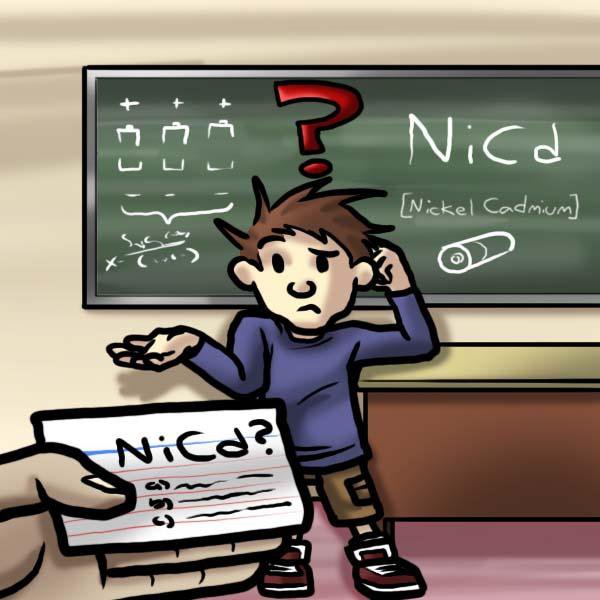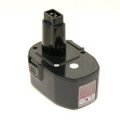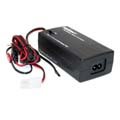What The Heck is a NiCd Battery?

If this is not your first stop in the NiCd information trail I am sure the information that you have read, heard, or found on the internet is just about overwhelming. In this tutorial we will do our best at keeping it simple, accurate, and to the point. If you have questions that are not addressed, please let us know and we hopefully be able to help.
What NiCad batteries are
‘NiCd’ is the chemical abbreviation for the composition of Nickel-Cadmium batteries, which are a type of secondary (rechargeable) batteries. Nickel-Cadmium batteries contain the chemicals Nickel (Ni) and Cadmium (Cd), in various forms and compositions. Typically the positive electrode is made of Nickel hydroxide (Ni (OH) 2) and the negative electrode is composed of Cadmium hydroxide (Cd (OH) 2), with the electrolyte itself being Potassium hydroxide (KOH).
How NiCd Batteries are Unique
NiCad batteries are different from typical alkaline batteries or lead-acid batteries in several key ways. One of the main key differences is in cell voltage. A typical alkaline or lead-acid battery has a cell voltage of approximately 2V, which then steadily drops off as it is depleted. NiCad batteries are unique in that they will maintain a steady voltage of 1.2v per cell up until it is almost completely depleted. This causes the NiCad batteries to have the ability to deliver full power output up until the end of its discharge cycle. So, while they have a lower voltage per cell, they have a more powerful delivery throughout the entirety of the application. Some manufacturers make up the voltage difference by adding an extra cell to the battery pack. This allows for the voltage to be the same as the traditional type batteries, while still retaining the constant voltage that is so unique of NiCads. Another reason the NiCad batteries can deliver such high power output, is they have very low internal resistance. Because their internal resistance is so low, they are capable of discharging a lot of power very quickly, as well as accepting a lot of power very quickly. Having such a low internal resistance keeps the internal temperature low as well, allowing for quick charge and discharge times. This feature, combined with the constant voltage of the cells, allows them to put out a high amount of amperage, at a consistently higher voltage than comparable alkaline batteries.
Power Tool Applications
 One of the most practical applications for NiCad batteries is in cordless power tools. Power tools demand a high amount of power delivery throughout the entire time of use, and do not function as well with dropping voltages as a typical battery would deliver. With NiCad technology, power tools are able to operate at full capacity for the entire time of use, not only the first few minutes of operation. With a Lithium-ion, alkaline, or even a lead-acid battery, the power tool will perform extremely well from the start, with a steady decline in power, until the power tool barely works at all. NiCads, on the other hand, will cause the power tool to stay at full power up until the very end of the charge. Not only that, but then NiCads can be safely charged in as little as 1-2 hours! We recommend PremiumGold NiCad replacement power tool batteries.
One of the most practical applications for NiCad batteries is in cordless power tools. Power tools demand a high amount of power delivery throughout the entire time of use, and do not function as well with dropping voltages as a typical battery would deliver. With NiCad technology, power tools are able to operate at full capacity for the entire time of use, not only the first few minutes of operation. With a Lithium-ion, alkaline, or even a lead-acid battery, the power tool will perform extremely well from the start, with a steady decline in power, until the power tool barely works at all. NiCads, on the other hand, will cause the power tool to stay at full power up until the very end of the charge. Not only that, but then NiCads can be safely charged in as little as 1-2 hours! We recommend PremiumGold NiCad replacement power tool batteries.
Charging NiCd batteries
 Another unique feature of NiCad batteries lies in the way they charge. Unlike a lead-acid battery which can take large variations in amperage and voltage while charging, the NiCad batteries require steady amperage and only very slight variations in voltage. The charge rate for a NiCad is right between 1.2 V and 1.45 V per cell. When charging NiCad batteries, a charge rate of c/10 (10% of capacity) is normally used, with the exceptions being speed chargers, which charge at either c/1 (100% capacity) or c/2 (50% capacity). NiCad’s have the ability to receive a much higher rate of charge up to 115% of their total capacity, with minimal reduction in life span, which makes NiCad batteries the ideal battery for power tools. If you notice the battery heating up while it is charging, cool it down, and then complete the charge. The chemical reaction in a NiCad while charging is heat absorbing, instead of heat producing, so higher power absorption is possible while charging, allowing for the quick recharge times.
Another unique feature of NiCad batteries lies in the way they charge. Unlike a lead-acid battery which can take large variations in amperage and voltage while charging, the NiCad batteries require steady amperage and only very slight variations in voltage. The charge rate for a NiCad is right between 1.2 V and 1.45 V per cell. When charging NiCad batteries, a charge rate of c/10 (10% of capacity) is normally used, with the exceptions being speed chargers, which charge at either c/1 (100% capacity) or c/2 (50% capacity). NiCad’s have the ability to receive a much higher rate of charge up to 115% of their total capacity, with minimal reduction in life span, which makes NiCad batteries the ideal battery for power tools. If you notice the battery heating up while it is charging, cool it down, and then complete the charge. The chemical reaction in a NiCad while charging is heat absorbing, instead of heat producing, so higher power absorption is possible while charging, allowing for the quick recharge times.
Storing NiCd Batteries
When storing NiCad batteries, be sure to pick a cool, dry place. The temperature range for storing batteries is between −20 °C and 45 °C. When preparing to store NiCad batteries, be sure to discharge the batteries fairly deeply. The range in recommendations is between 40% and 0% charged when going into storage. NEVER short circuit a NiCad to drain as this causes excessive heat and can cause hydrogen gas to be released…AKA-Boom! The self-discharge rate for NiCad’s is right around 10% at 20 °C, and rising up to 20% at higher temperatures. It is recommended not to store NiCads for an extended amount of time without occasionally using the batteries. Over long periods of storage the cadmium in the NiCad can form dendrites (thin, conductive crystals), which can bridge the gap between contacts and short out the cell. Once this happens, there is really nothing that can be done to fix it long term. The best way to prevent this from happening is frequent use.
The Memory Effect
One of the most discussed topics about NiCad’s is whether or not they have a ‘memory’. The idea of a charge memory came when they started using NiCad batteries in satellites where they were typically charging for twelve hours out of twenty-four for several years.1 After several years it was noticed that the battery capacity has seemed to have declined severely, and while still operable, they would only discharge to the point that the charger would typically kick in, and then would drop off as if they were completely discharged. For the typical consumer this does not have a large effect, however, we do recommend fully discharging the NiCad you are using before recharging. Occasionally completely draining (but NEVER short circuiting) a NiCad can prevent the on setting of this mysterious battery ‘memory’. An effect with similar symptoms to the memory effect is what is called the voltage depression or lazy battery effect. This is caused by frequent overcharging of the NiCad. You can tell this is happening when the battery appears to be fully charged but discharges quickly after only a brief period use. This is not the memory effect, which is limited to NiCad batteries alone, but is something that can happen to any battery, and is almost always from overcharging. Occasionally this can be fixed by running the battery through a few very deep discharge cycles, but doing so can reduce the overall life of the battery. NiCad batteries are the only battery chemistry that benefit from completely discharging before recharging.
Proper Disposal
NiCad batteries contain Cadmium, a highly toxic ‘heavy’ metal. Never burn NiCads, and never throw them in the trash or break them open. Always recycle NiCad’s at an official NiCad recycle place. As long as NiCads are kept sealed, and never short circuited or severely over charged, NiCad batteries are perfectly safe to use, and do not vent toxic material. If a NiCad battery is treated well, it should last to the 1000 cycle mark. Speed charging NiCads can slightly shorten their life span, as can extended improper storage.
Summary
While limited in application, NiCad batteries are an exceptional choice for all of your cordless power tool requirements. There are other chemistry batteries coming online as technology marches on, however the best bang for your buck, insofar as Power Tool replacement batteries, still lies with this tried and tested battery type.


